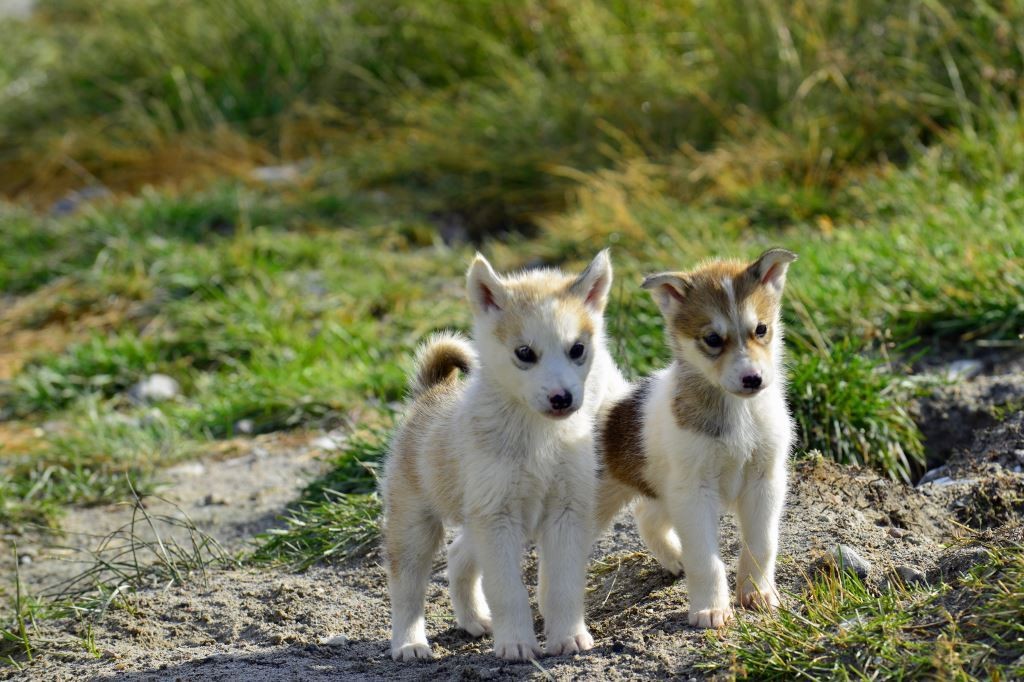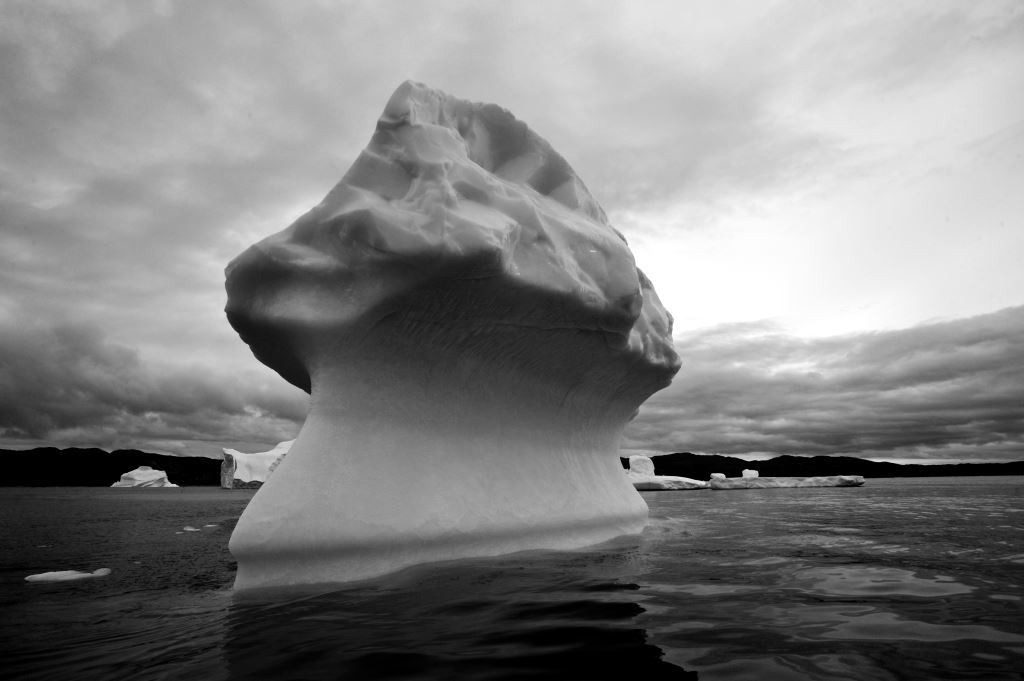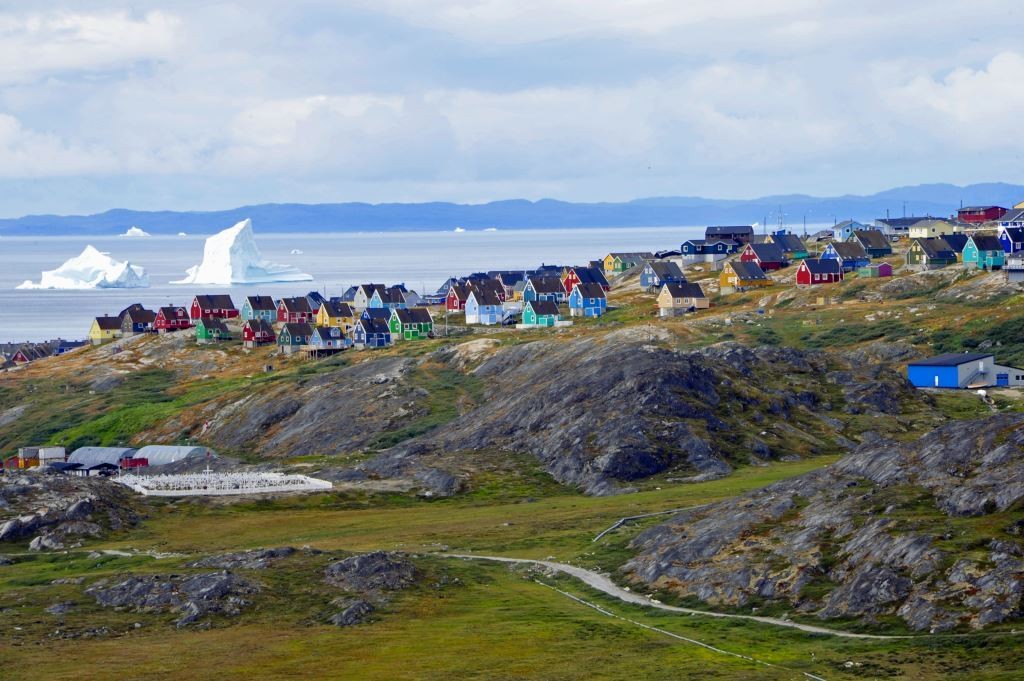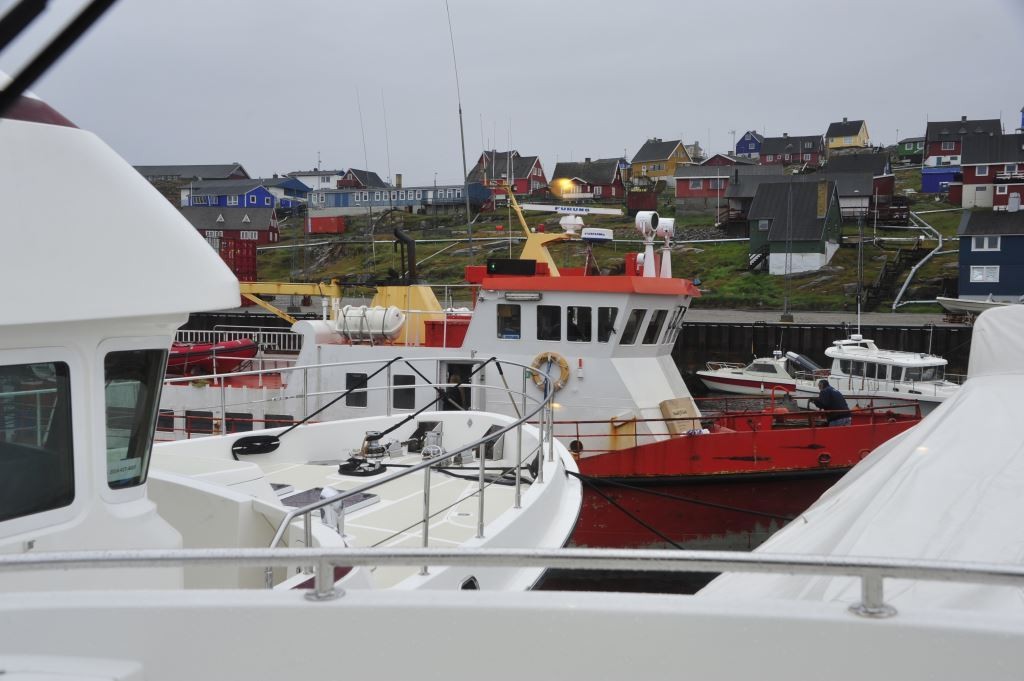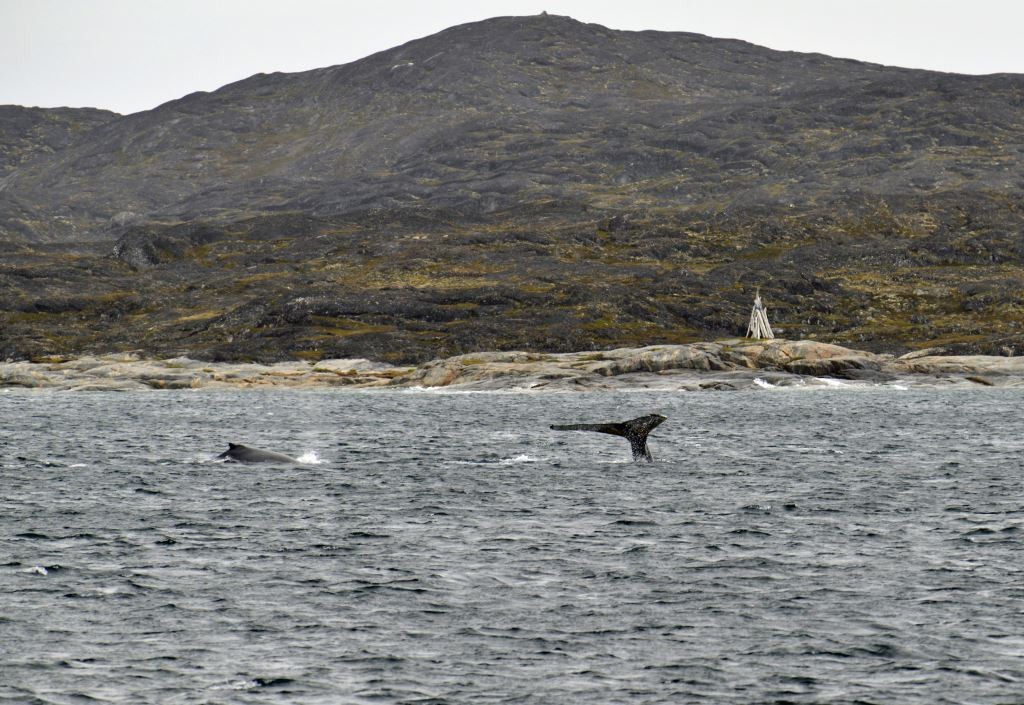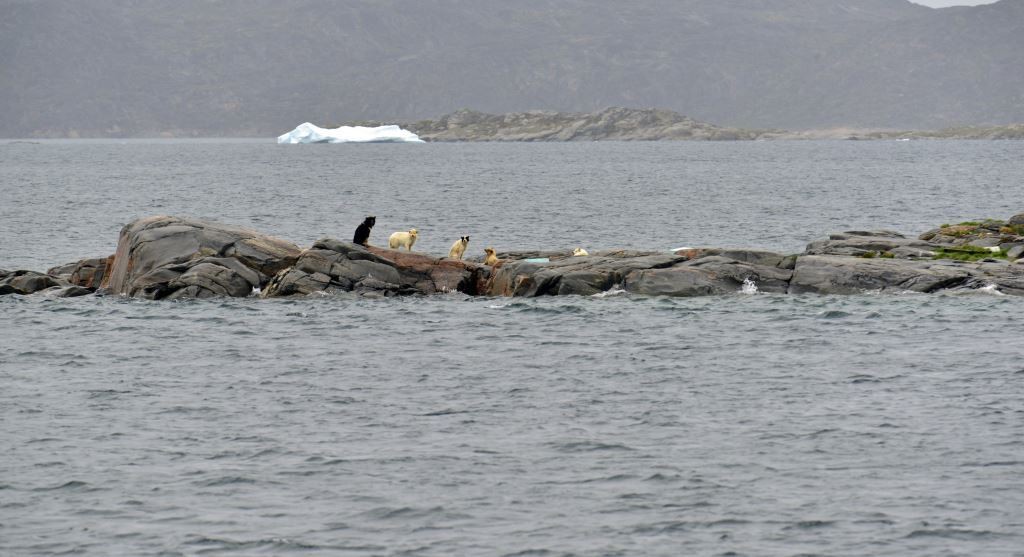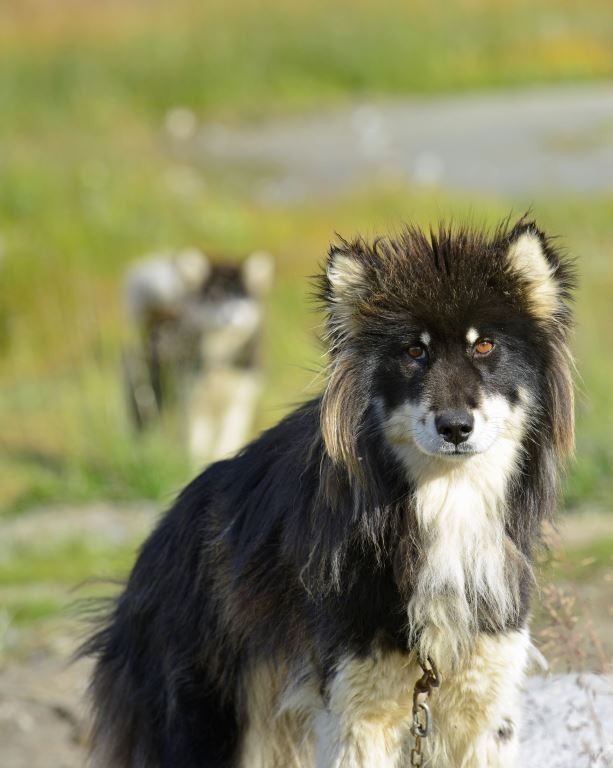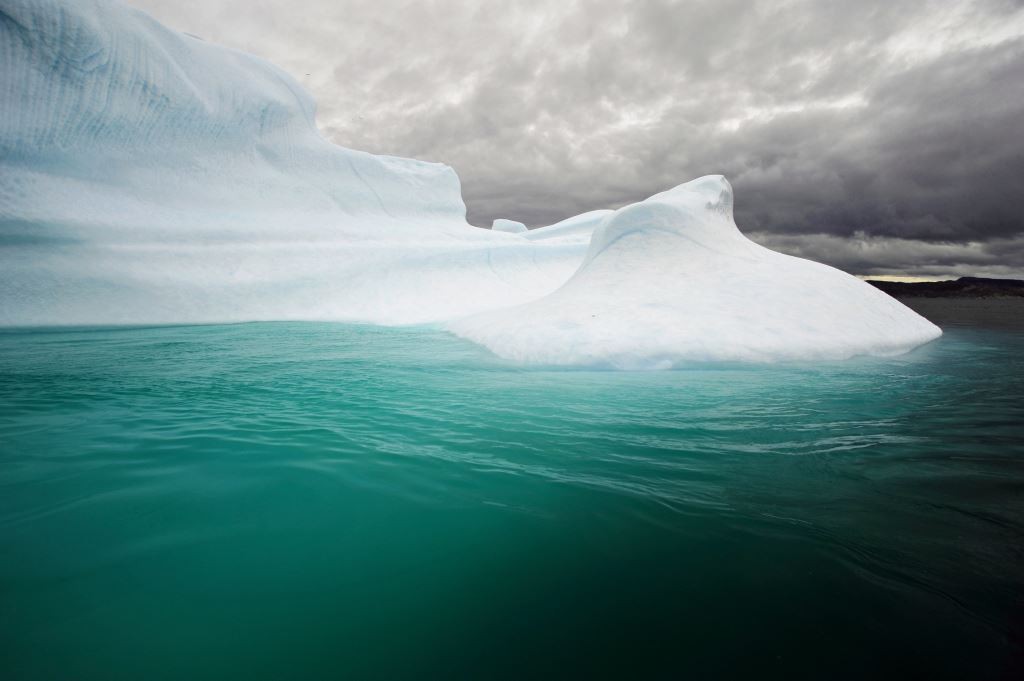From the Editor
A Million Miles’ Worth of Boats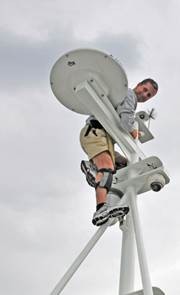
I’ve been on the road for much of the last few months, from cruising in Greenland, the subject of this month’s Ezine, to vessel inspections and sea trials in Seattle, Ft. Lauderdale and China, along with delivering a series of lectures at the International Boat Builders’ Convention in Tampa, which I’m happy to report set a record for attendance, up 47% from last year’s event. While I am adamant about avoiding false optimism where the boat business is concerned, it’s difficult to deny the industry is making a comeback. As I write this month’s column I’m somewhere over the Pacific, my assistant Katie and I are returning from a week-long consulting project in China (my fifth, and not the last, to this region this year). When I landed at LAX on the return from another Asia project a few weeks ago, I received an e mail welcoming me to frequent flyer Million Miler status. As I sat aboard the aircraft reflecting on that note, I thought about the ground I’d covered, both literally and figuratively since I started the consulting business nearly seven years ago.
I’ve been fortunate to have undertaken a wide range of projects, working for a variety of interesting clients, nearly all of whom I’ve learned something from; not surprisingly most have been entrepreneurs of one sort or another, each one has a story to tell, each of which includes valuable lessons, lessons I’ve tried to apply to my own business model; I try to learn as much from my clients as they learn from me. I’ve also estimated that I’ve spent more time underway, conducting sea trials, dwelling in engine rooms and making offshore passages in this time than I did in the previous eleven years, while managing a boat yard. Back then I was often desk-bound, however, and thankfully, that’s no longer the case.
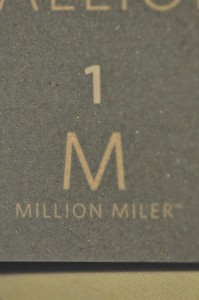 Since my departure from PassageMaker in May I’ve been able to devote more time to consulting and lecturing, including conducting the first “graduate level”, in the boat yard, Trawler and Motor Vessel Technical Training workshop, which was held last week, with the able assistance of the folks at Deltaville Boat Yard. Based on attendee evaluations, I’m happy to report that the event was an unqualified success. Fueled by that feedback, I’ve decided to hold another larger, and more information-packed workshop in early May 2015, the details of which will be included in upcoming Ezines. Twenty-one students attended this event, you can see and hear some of their videotaped comments here.
Since my departure from PassageMaker in May I’ve been able to devote more time to consulting and lecturing, including conducting the first “graduate level”, in the boat yard, Trawler and Motor Vessel Technical Training workshop, which was held last week, with the able assistance of the folks at Deltaville Boat Yard. Based on attendee evaluations, I’m happy to report that the event was an unqualified success. Fueled by that feedback, I’ve decided to hold another larger, and more information-packed workshop in early May 2015, the details of which will be included in upcoming Ezines. Twenty-one students attended this event, you can see and hear some of their videotaped comments here.
For years my business advisor as well as clients and lecture attendees have encouraged me to organize my own lectures and hands-on workshops, and for years I’ve resisted, saying, ‘I don’t want to own or manage the event, I just want to show up and lecture’. With my departure from Trawler Fest, however, that emphasis changed. While I once considered the very thought of planning and organizing a lecture event drudgery, I’ve reveled in the details of assembling this workshop. As a lecturer I’m frequently less than satisfied with event organization, in most cases the details are wrong, often very wrong, and much like marine systems, the details often make or break the event. Those organizing the events aren’t lecturers, and as such they often fail to see these issues, which include the room (or tent) is too bright for a PowerPoint presentation, I’ve lost count of how many times I’ve gone to a lecture room in advance and found myself covering windows with table cloths, or it’s too hot or too cold, the ability to use props such as working engines is limited, meals and refreshments are low quality or absent, and my all-time event pet peeve, powdered rather than real milk or cream for coffee. With the inaugural Trawler and Motor Vessel Training workshop, I had the opportunity fully control the event content, as well as myriad small details, including ensuring genuine milk was available for coffee. Now, if it’s not right, I have no one to blame but myself.
This month’s feature, part one of a multi-part series, profiles the Greenland passage. I hope you find it both interesting and inspiring.
Greenland Odyssey
Part I
Steve D’Antonio
October, 2014
In the first of this multi-part series on cruising in Greenland, we learn that getting there is half the adventure, local vessels have the right of way at wharfs, dogs are more plentiful than people and what it’s like to get up close to an iceberg.
An iceberg, up close and personal; close enough to touch, hear and even smell.
Downwind, icebergs smell like fish, at least the one I had my hands on at the moment did, something I never would have imagined. They also fizz, crackle and tinkle continuously. Having spent my share of time looking at, and photographing icebergs, this was my first intimate encounter, and it bordered on spiritual. I’m hopelessly hooked on high latitudes, and bergs are simply another attraction.
In January of this year a client, owner of the Nordhavn 68 Migration, asked if I’d have interest in cruising with him in Greenland sometime during the coming summer. It was a somewhat rhetorical question, as he knows I’m an insufferable high latitude junkie; I’d move heaven and earth to cruise in Greenland, particularly as it was one of the last North Atlantic islands whose coast I hadn’t seen.
My wall calendars typically stretch out six months, and as soon as August made its appearance I stuck a Post It note across the middle emblazoned with the word, “GREENLAND”. I gazed at that note for the next six months, however, with a busy schedule, and traveling much of that time, I couldn’t afford myself the luxury of too much contemplation, and the timing would necessarily be a moving target, one that ebbed and flowed with a yard refit period for the vessel, and the inevitable fits and starts caused by the vagaries of Canada’s Maritime Provinces’ weather patterns.
Before I knew it, however, I began to receive satellite e mails from Migration’s master, and the dates began to grow firmer. I had to begin thinking about how I would get to this far off and difficult to access land. I soon discovered there are no scheduled flight to Greenland from North America in August, the alternatives being traveling via Iceland or Denmark. At one point I’ll confess, I had second thoughts, I’d begun to dig into the travel details, which were daunting (and were only made possible thanks to my extreme travel specialist, The Travel Team Inc. of Buffalo, New York), I recall looking at that Post It note again and thinking, “this is really a hassle, is it worth it?”. That notion, however, lasted for just a brief instant, as I reminded myself that the locations that hold the greatest appeal for me are sparsely populated, which is one of the reasons why they are difficult to reach. Ultimately I settled on transiting via Copenhagen, allowing me an opportunity to meet with another client in Denmark on my way, and affording me a day to explore an interesting, and nautically-oriented city.
I arrived in Copenhagen on Sunday, August 10. The cool Northern European weather and clean air made for a surreal setting, and climate shock, at least for me, a few days prior to this I was sweating under the relentless and hazy sun of Xiamen, China, which lies virtually over the Tropic of Cancer. Having transited 31 time zones in just over a week, with a layover, “home berth” time of just 28 hours, the transition was startling, unmistakable and welcomed.
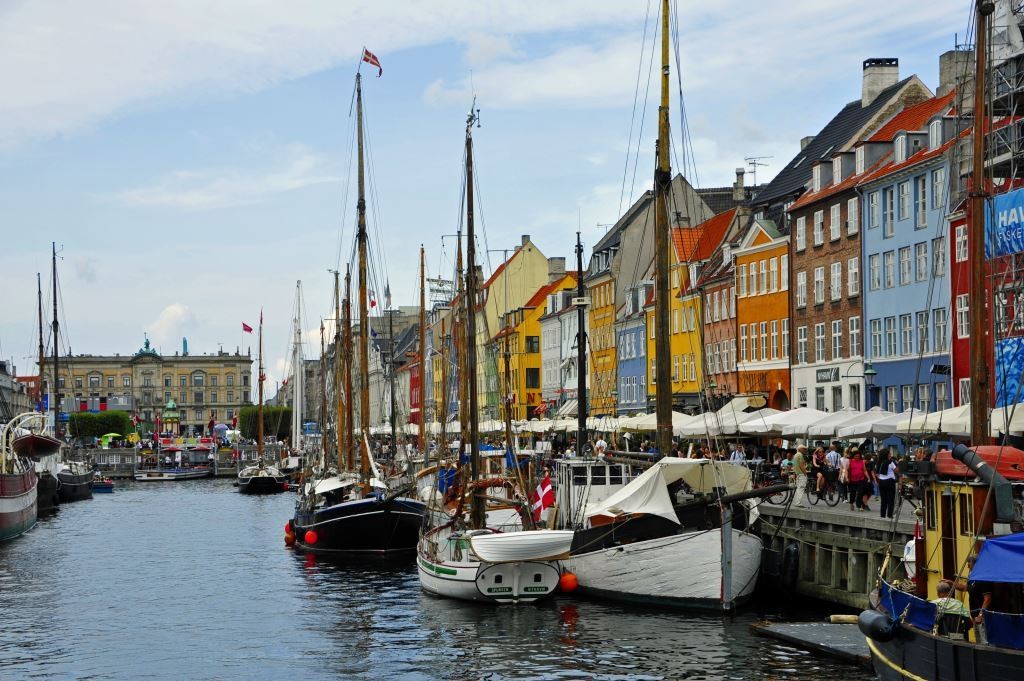
While the time there was brief, Copenhagen can be experienced in a day. Fortuitously, A wooden boat festival was underway during the author’s visit.
After spending a day and night touring this picturesque city, the weather could not have been better, sunny, 60s and gloriously low humidity, I found myself back at the airport, bound for Greenland with an extremely heavy suitcase filled mostly with parts and tools for the boat. I was fortunate, the five hour flight was a wide body Airbus, and it wasn’t full, more importantly, the weather over the North Atlantic was unusually clear. The flight path traversed both the Faroe Islands and Iceland, and I was overjoyed to note that both were visible from my window. Having flown over them many times this is the first that I’ve seen both and probably the only time I’ve seen the Faroes from the air, they are nearly always enshrouded in clouds or fog. Eastern Greenland’s, as we flew over it, represented an alien world all together; it looks like the land that time forgot; bergs large and small scatted about a deep blue sea like ice spilled on a black cloth, along with glaciers and cobalt-colored lakes and fjords. One almost expects to see wooly mammoths plodding through the drifting snow.
The interior, what glimpses I could catch, was equally awe inspiring, wrinkled converging glaciers pierced by coal black rocky peaks. The icecap itself defies description, expansive, seemingly endless and unblemished white as far as the eye can see, with only the shadow of clouds offering perspective and a sense of depth. Where clouds are absent, the unremitting white is mesmerizing, and difficult to comprehend, scale and depth perception are impossible, and all water locked up in ice that’s two miles thick, it’s truly amazing.
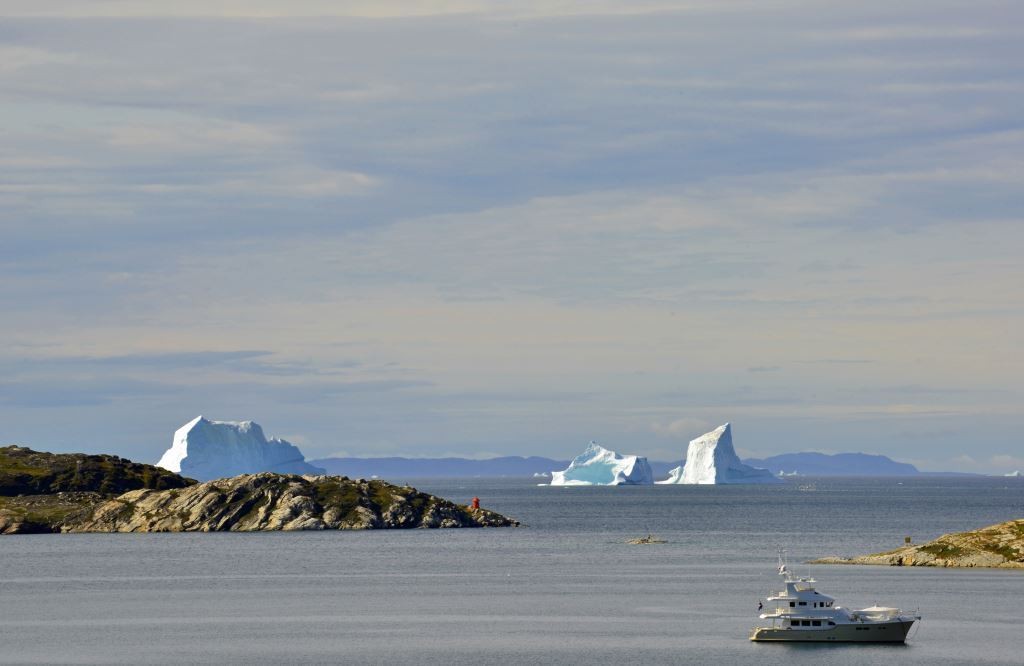
Migration rests at anchor, above the Arctic Circle; grounded icebergs guard the entrance to this harbor, affording the crew an opportunity for a closer look in the tender.
Thanks to heavy sea ice, my destination of Ilulissat isn’t an option for Migration; try as she might for two days, she could not make her way into this port. When I arrived in Greenland I received this message from her master, and had to cancel that connecting flight and book a new one to the alternate, nearby port of Aasiaat instead, which isn’t available until the following day, stranding me in the airfield town of Kangerlussuaq, a barren, uninspiring, and incredibly dry and peculiarly warm, for Greenland (it’s in the high 60s) waypoint for travelers. The location is well-suited for one thing, flying, with 300 cloud free days a year. First built by the US Army as a military airfield in 1941, it’s now one of only two large civilian airfields in Greenland that can handle wide body, long range passenger aircraft. It’s also the coldest, and one of the driest, continuously inhabited towns in Greenland.
I reluctantly leave the airport on foot and after encountering two “no vacancy” signs I manage to find a room at the Polar Lodge, a small barracks type affair, offering a tiny room, with a communal bathroom, for a mere $170/night, and no internet. A sign asks guests to kindly refrain from using outlets to charge phones, cameras and computers. Energy is at a premium in this region, with every gallon of fuel having to be shipped in at great expense. With some time to kill, I signed up for a tour that took participants to the edge of Greenland’s icecap, transiting Greenland’s longest, at 40 km (and worst), corduroy-like road.
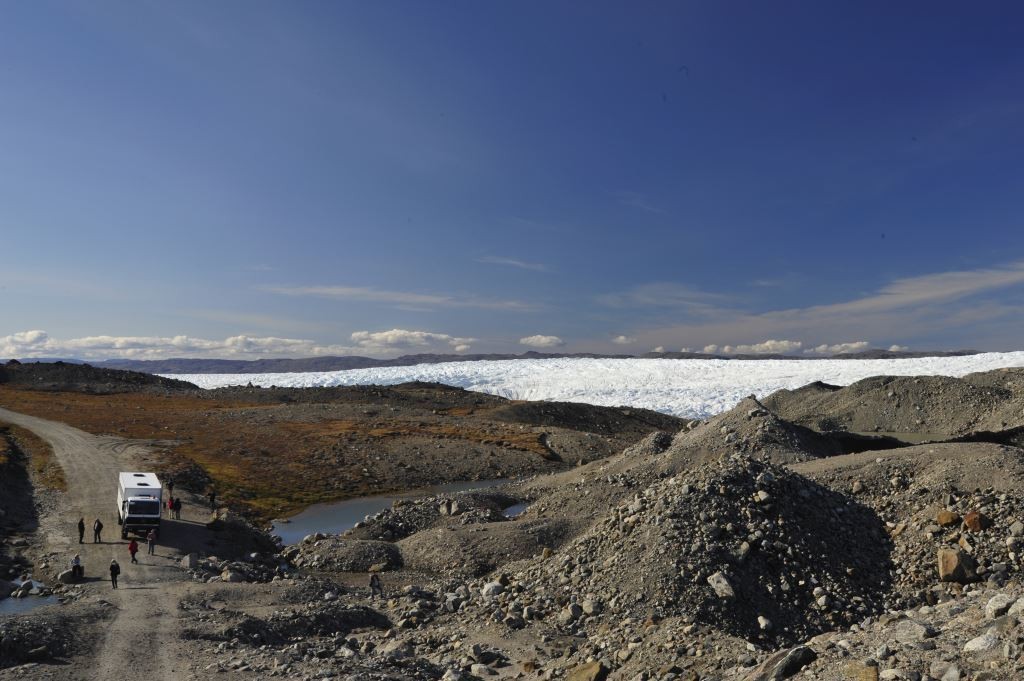
The edge of the Greenland icecap; while picturesque to be sure, the bone-jarring ride there was less than memorable.
Traveling in a large windowed box set on the back of a huge Mercedes flatbed truck chassis, it was a bone jarring, filling rattling, camera jolting ride. The road is used by car manufacturers for automobile endurance experiments. Viewing and walking upon the icecap was, interesting, however, I’m not sure it was worth the resulting bumps, bruises and aching back, I’d always rather go by sea.
The following day I happily departed Kangerlussuaq. A brief thirty minute flight aboard a twin turboprop DASH 8 to Aasiaat and the landscape and weather change dramatically, it’s now overcast, windy and drizzling. The airport is carved out of a rocky cliff face and the runway leaves no margin for error, the aircraft stops after landing and taxied with no tarmac to spare, then executes a J-turn, and the seaward wing swings out over the water. A five minute, $20.00, cab ride later and I’m finally at the waterfront, aboard Migration, my home for the next month. The moment I stepped off the aircraft I knew this was a far different location than my first stop in Greenland, with its distinctive sea air aroma and wind’s sharper bite. The town is a classic northern fishing village; brightly colored houses perched on rock ledges and outcroppings, a big wharf, and boat yard with railway. When I arrive it’s relatively calm, however within a few hours a front blows through, the wind picks up and temperature drops to 45° Fahrenheit and it’s blowing 35 kts.
Like neighboring high-latitude Scandinavian villages, those in Greenland (it is a Danish possession) are typically brightly painted. The diversion from the barren, ice-scoured landscape is no doubt a welcomed change for the residents.
After dinner ashore with the crews of Migration and cruising sister ship Shear Madness, a Nordhavn 72, I looked forward to finally getting a good night’s sleep, without resorting to a sleeping pill, and in familiar surroundings, for the first time in ten days. It wasn’t meant to be, at 0100 I awoke with a start, a loud bang that I assumed was a bound dock line shifting, something that’s to be expected where the tidal range is 16 feet. I hastily threw on clothes and met the skipper in the pilothouse. It was still blowing hard, while the darkness was pierced by the wharf’s flood lights. Under their yellow glow we noticed our forward-most dock line had been taken off the dock bollard and thrown onto the deck, the source of the noise we both heard. That seemed strange if not disconcerting. We then noticed a man on the dock, we ventured out to talk with him and in broken English he made it clear we needed to move, a boat was on its way in and we were in her space. Moving two vessels, Shear Madness was rafter outboard of us, of this size in 35 knots of wind (it was thankfully blowing us off the dock) is no easy feat. We stood by for a few minutes to see what would happen.
An example of the tonnage (and hull material) rule in action; giving way to this steel, vessel, with her dented, battle scarred hull seemed like the right thing to do.
Within a few minutes a steel, 65-foot, single screw orange-hulled work boat expertly nosed its way into the impossibly small space between our bow and the landward side of the wharf, leaving no more than a foot between his starboard side and our neighbor’s bow anchors, then using a spring line, her helmsman deftly pivoted the vessel, she had no thrusters, swinging his stern 90° in so we were now bow to bow and only a foot or two apart. The skipper and I went on deck to see what was up and again, between attempting to light cigarettes, in 35 knots of wind, the crew made it clear we needed to move aft, they needed more room when the tide fell. We politely requested they reconsider, explaining it was too windy. With that the orange boat’s deck hand on the dock began to slip our bow lines, while the vessel’s captain inched forward pushing his battle-scarred steel stem against our anchor, moving us aft a few inches. He made his point, we agreed to move. After awakening the Shear Madness crew, all hands adjusted and relocated lines over the course of the next 45 minutes, moving both vessels aft about ten feet, which seemed to satisfy the orange boat’s crew. Afterward I fell back into bed exhausted, yet sleep only came to me in short interludes, an hour of on deck excitement in freezing wind and I was simply too awake to recapture my former blissful slumber.
Humpback whales were sighted close inshore on several occasions, as well as those hunting them.
We got underway late the next morning, bound for Christianshaab, sighting along the way a pod of humpback whales as well as the strange sight of sled dogs “marooned” on small rocky islets. It seems this is not unusual, leaving them there during the “off” season, where they don’t need to be restrained. I can only assume their owners visit them periodically to provide food and water.
Sled dogs are more common than people along Greenland’s coast above the Arctic Circle. When not being used to pull sleds in winter, they rest up…and have puppies. Some, like those shown here, are kept on small islands by their owners.
As I opened the pilothouse Dutch door a few times to take photos I couldn’t help but notice the air, it has an almost sweet smell to it, one that simply makes one want to inhale deeply. The humidity is very low, when it’s not raining, and the air is particulate-free, offering astounding visibility that at times causes far away land masses to distort through atmospheric lenses, making mountains and sheer cliffs look mushroom-like.
We spend a few days in Christianshaab’s secure and well-protected anchorage, venturing ashore to explore and stretch our legs. One feature that all the villages above the Arctic Circle we visit share are the sled dogs, which typically outnumber the people, and there’s no shortage of puppies this time of year as well. The adult dogs are for the most part very handsome, surprisingly docile, playful and even cuddly.
While all sled dogs are of the same general variety and build, the uniqueness of their faces and expressions was impossible to ignore. Surprisingly, they are docile and friendly.
During one of our hikes we spy several large icebergs just outside the harbor entrance, and they beckon to us. Using our partner vessel’s tender, the two crews head out of Christianshaab to get an up-close look at the grounded islands of ice. The weather is calm and mostly overcast, which turns out to be ideal for photographs. The towering immensity of these behemoths is overwhelming, that’s predictable.
As most readers know, the bulk of an iceberg’s mass resides below its waterline. When that mass stretches horizontally beneath the waves’ surface, the result is an iridescent green glow.
The RMS Titanic likely struck an iceberg that was “born” in Greenland. There are, however, a few surprises. Icebergs crackle, fizz, and tinkle continuously, a constant din that’s occasionally punctuated by a sharp but deep, distant rifle shot-like crack. Semi-clear veins of blue ice are visible in a few places, these are areas where cracks have developed in the pre-berg glacier and have then refrozen after filling with water rather than snow (icebergs are made from calving glaciers, which are made from compressed, and very old snow, the ice in Greenland’s bergs may be as much as 15,000 years old). A constant stream of bubbles rises up around each berg, the bubbles range in size from soft ball size down to entrained air that at first looks like cloudy water. When the latter rises it sounds like a glass of seltzer water. In iridescent green hue rises up from submerged portions of the iceberg; driving over these is especially eerie. Finally, icebergs have a distinctive, slightly fishy downwind odor, presumably a result of stirring up the bottom as they grind their way along the sea floor. Before departing the bergs we collect some very old ice for our evening beverages.
Next month, in part II of ‘Greenland Odyssey’ we’ll visit a UNESCO World Heritage site glacier, as well as encountering whale hunters, fishing and mining villages whose character changes noticeably as we head south, and spectacular land and sea scapes.
For more information on the services provided by Steve D’Antonio Marine Consulting, Inc. please e mail Steve at info@stevedmarineconsulting.com or call 804-776-0981

